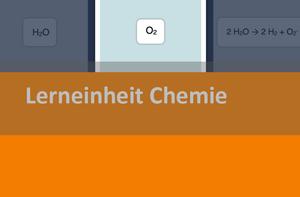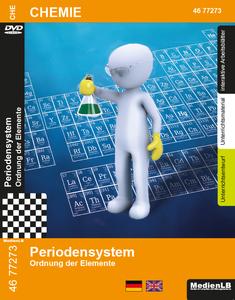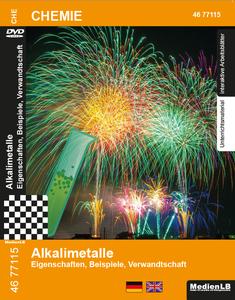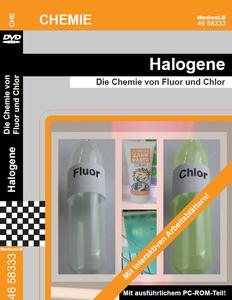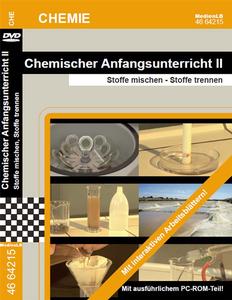-
Chemicals in the Home
Properties, Functions, Labelling
Baking, washing up, cleaning, – quite ordinary activities in the household. For these purposes we mostly use various aids such as baking and cleaning agents. However, we are often not aware of the chemical reactions involved.
More about the DVD -
Plastic
Production, Use, Recycling
Plastic has been around for not longer than roughly 100 years, and the synthetic material is a brilliant invention. Its production is cheap, it can take almost any possible form, it is light-weight, versatile and, above all, inexpensive.
More about the DVD -
Biogas
Use and Risks
In our modern lives, we are dependent on a regular supply of energy.
More about the DVD -
Solutions, Emulsions and Mixtures of Substances
Properties and Uses
Be it milk in a cereal bowl, tea in a glass or the air around us. We constantly come across mixtures of substances in our everyday lives. As the name suggests, they are mixtures – mixtures of several so-called pure substances.
More about the DVD -
Periodic Table
System of the Elements
With the help of the periodic system chemists can predict properties of chemical elements and derive chemical reactions. But you need not be a chemist to understand the periodic system.
More about the DVD -
Alkali Metals
Properties, Examples, Relationship
What do lithium batteries, table salt and firework rockets have in common? All of them contain compounds of alkali metals. Alkali metals are members of the first group of the periodic table of the elements. The metals in this group are lithium, sodium, potassium, rubidium, caesium and francium.
More about the DVD -
Materials and Substances of Everyday Life
Properties and Behaviour
Hearing these words, you first think of the materials our clothing is made of. But all objects surrounding us in everyday life consist of one or several materials.
More about the DVD -
Fuel Cell
Energy of the Future?
A smartphone offers a lot of opportunities nowadays. The numerous apps and applications may enrich your daily life but cost a lot of electricity. It is particularly annoying when the device fails at the most inconvenient moments.
More about the DVD -
Fire and Flame
Development and Fire-fighting Methods
Fire – one of the most important human discoveries. It gives us warmth and light, conveys security and fascinates us with its dancing flames.
More about the DVD -
World of Crystals
Breeding, Growth and Structure
What have salt, iron, diamonds and a snow flake in common? At first glance, not very much.
More about the DVD -
Fascination Lime
Formation and Application
Lime is an important raw material. It is extracted as limestone by opencast mining, ground to limestone products or calcined in special kilns.
More about the DVD -
Halogens
The Chemistry of Fluorine and Chlorine
The compounds of halogens are - with the exception of astatine - widespread, can be encountered in nature and are versatile substances. This fact is taken up on this DVD in order to teach the students the chemistry of the halogens by illustrating their special qualities and explaining the correlation of their structure with their chemical properties.
More about the DVD -
Halogens
The Chemistry of Bromine and Iodine
The compounds of halogens are - with the exception of astatine - widespread, can be encountered in nature and are versatile substances. This fact is taken up on this DVD in order to teach the students the chemistry of the halogens by illustrating their special qualities and explaining the correlation of their structure with their chemical properties.
More about the DVD -
Acids and Bases
In Everyday Products
We can find acids and bases in every supermarket, some of them in our food, others in cleaning agents. In everyday products, acids and bases as well as acidic and alkaline reacting salts have extremely different functions.
More about the DVD -
Basics of Chemistry II
Mixing and Separating Substances
When we take a closer look at substances, we discover that they consist of either one single element or of mixtures of several elements. Chemists therefore divide the world of substances into pure and mixed chemical substances.
More about the DVD -
Basics of Chemistry I
Examining and Measuring Substances
We are surrounded by objects and substances. We recognise objects that are to serve a specific purpose by their shapes. Similar objects may consist of different materials or substances. Substances, however, are independent of shapes and possess very specific properties. We are able to perceive many of these substances with our senses. For example, we can see, touch or smell them so as to be able to recognise them. Chemists are particularly interested in those substance characteristics that can be measured.
More about the DVD -
Aluminium II
Production, Processing, Recycling
The metal aluminium is growing in importance because of its specific properties and manifold application possibilities. This DVD deals with the industrial production of aluminium as a raw material, its processing and the manufacturing of alloys for
More about the DVD -
Aluminium I
Properties, Reactions, Specifics
In the modern world, we encounter aluminium at every turn. This is due to the particular properties of the metal. Increasingly, aluminium is about to edge iron and steel out of engineering, as aluminium allows energy-saving lightweight construction of aircraft and vehicles of all kind. Aluminium is weather-resistant, does not rust and is therefore well suited as building material for house facades, window frames or simply for all parts that are exposed to wind and weather.
More about the DVD -
C, CO2 and Associates in Everyday Life
From Carbon to Car
All organic matter contains carbon. Coal is deposited in the Earth's interior. It developed about 300 million years ago from plants in a geological period which is also called Carboniferous. During the combustion of organic matter, carbon turns into the gas carbon dioxide.
More about the DVD -
Carbohydrates
Chemistry as Sweet as Sugar
The term carbohydrate or saccharide is a collective name for all substances with the chemical formula Cn(H2O)n. Carbohydrates are the basis of nutrition. They are part of our diet as starch, glucose (grape sugar), fructose (fruit sugar), lactose (milk sugar) and saccharose (beet, cane or table sugar).
More about the DVD -
Noble Gases
A Family of Noble Disposition
Xenon, Helium, Neon, Argon, Krypton and the radioactive Radon belong to the noble gases. These form the family of noble gases as the elements of the eighth group of the periodic table. All of them are colourless and odourless, non-inflammable and non-toxic.
More about the DVD











